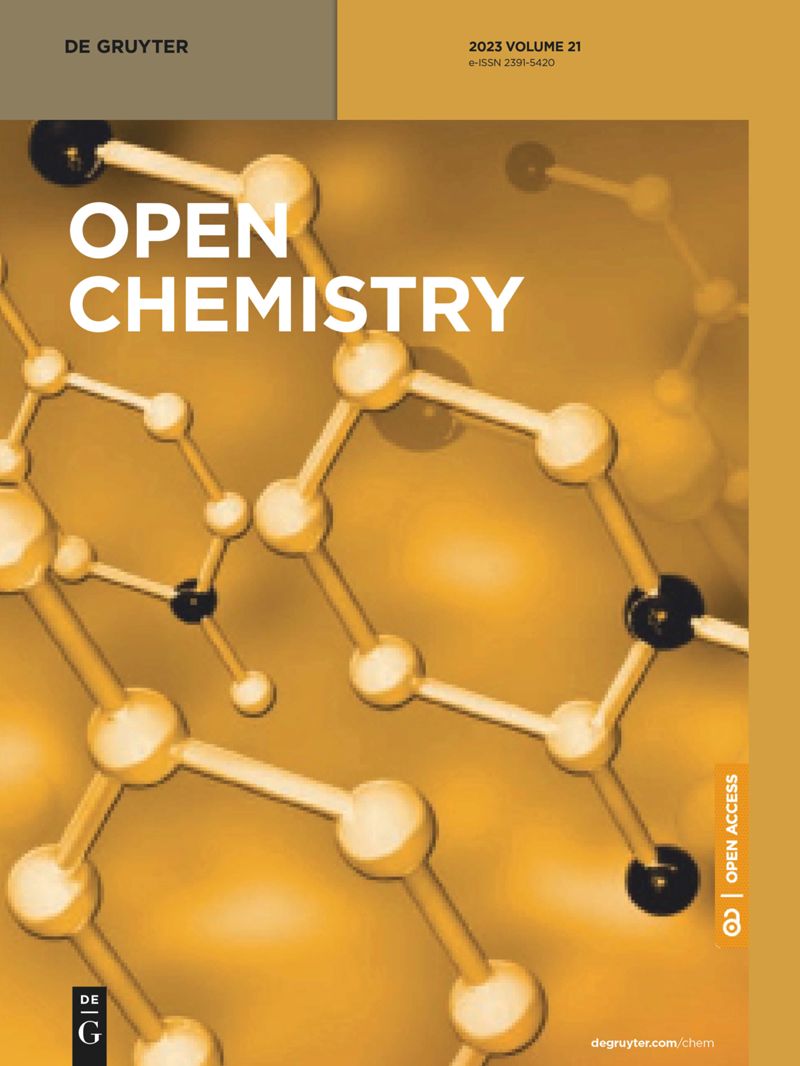丹参的植物化学筛选、抗氧化特性和光保护活性
IF 1.9
4区 化学
Q3 CHEMISTRY, MULTIDISCIPLINARY
引用次数: 0
摘要
本研究评估了来自奥雷斯山脉的丹参(Salvia balansae)作为天然生物活性化合物来源的潜力。使用甲醇、乙醇和丙酮分别提取了叶、花和茎。酚类化合物采用比色法进行定量,并使用液相色谱-质谱法(LC-MS)进行鉴定。抗氧化能力采用六种不同的体外检测方法进行评估:2,2′-偶氮双(3-乙基苯并噻唑啉-6-磺酸)二铵盐法、1,1-二苯基-1-苦基肼法、铜还原抗氧化能力法、铁还原抗氧化能力法、亚铁离子螯合法和菲罗啉法。甲醇花提取物的 O-二酚和酚含量最高(分别为 287.9 ± 0.50 和 147.87 ± 0.21 µg GAE/mg),而乙酸和乙醇叶提取物的黄酮(72.17 ± 0.12 μg QE/mg)和黄酮醇(35.28 ± 0.05 μg QE/mg)含量分别最高。利用 LC-MS 鉴定出 18 种酚类化合物,包括喹酸(5.051-69.69 ppm)、木犀草素-7-O-葡萄糖苷(7.802-44.917 ppm)、芹菜素-7-O-葡萄糖苷(3.751-68.507 ppm)和芹菜醇(2.081-15.608 ppm),从而区分了这一 Aures 分类群。主成分分析和算术平均非加权配对组法揭示了植物化学物质、抗氧化特性和光保护活性受生物活性和化合物含量影响的差异性。总之,S. balansae 表现出了良好的光保护能力、关键生物活性化合物的存在以及广泛的抗氧化潜力,表明这种地方性植物是天然抗氧化剂和光保护剂的宝贵来源,具有医药和化妆品应用价值。本文章由计算机程序翻译,如有差异,请以英文原文为准。
Phytochemical screening, antioxidant properties, and photo-protective activities of Salvia balansae de Noé ex Coss
The present study evaluated the potential of Salvia balansae from the Aures Mountains as a source of natural bioactive compounds. Leaves, flowers, and stems were extracted separately using methanol, ethanol, and acetone. Phenolic compounds were quantified colorimetrically and identified using liquid chromatography coupled with mass spectrometry (LC-MS). Antioxidant capacity was assessed using six different in vitro assays, 2,2′-azinobis(3-ethylbenzothiazoline-6-sulfonic acid) diammonium salt, 1,1-diphenyl-1-picrylhydrazyl, cupric reducing antioxidant capacity, ferric reducing antioxidant power, ferrous ion chelating, and phenanthroline assay, while the photo-protective capacity was evaluated using the sun protective factor. The methanolic flower extracts revealed the highest O-diphenol and phenolic levels (287.9 ± 0.50 and 147.87 ± 0.21 µg GAE/mg, respectively), whereas the acetonic and ethanolic leaf extracts contained the highest flavonoid (72.17 ± 0.12 μg QE/mg) and flavonol (35.28 ± 0.05 μg QE/mg) levels, respectively. LC-MS was used to identify 18 phenolics, including quinic acid (5.051–69.69 ppm), luteolin-7-o -glucoside (7.802–44.917 ppm), apigenin-7-o -glucoside (3.751–68.507 ppm), and cirsiliol (2.081–15.608 ppm), distinguishing this Aures taxon. Principal component analysis and unweighted pair-group method with arithmetic mean revealed variability in phytochemicals, antioxidant properties, and photo-protective activity influenced by biological activities and the compound content. Overall, S. balansae demonstrated promising photo-protective capacity, the presence of key bioactive compounds, and wide-ranging antioxidant potential, presenting this endemic plant as a valuable source of natural antioxidants and photo-protective agents with pharmaceutical and cosmetic applications.
求助全文
通过发布文献求助,成功后即可免费获取论文全文。
去求助
来源期刊

Open Chemistry
CHEMISTRY, MULTIDISCIPLINARY-
CiteScore
3.80
自引率
4.30%
发文量
90
审稿时长
6 weeks
期刊介绍:
Open Chemistry is a peer-reviewed, open access journal that publishes original research, reviews and short communications in the fields of chemistry in an ongoing way. The central goal is to provide a hub for researchers working across all subjects to present their discoveries, and to be a forum for the discussion of the important issues in the field. The journal is the premier source for cutting edge research in fundamental chemistry and it provides high quality peer review services for its authors across the world. Moreover, it allows for libraries everywhere to avoid subscribing to multiple local publications, and to receive instead all the necessary chemistry research from a single source available to the entire scientific community.
 求助内容:
求助内容: 应助结果提醒方式:
应助结果提醒方式:


